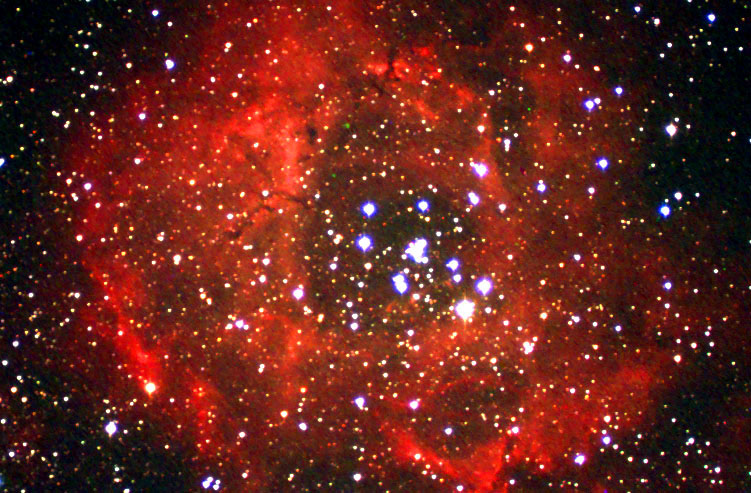
Taken November 19, 2008, about 10:30 p.m. 402 camera mounted on the 300mm Nikkor lens. Orion StarShoot autoguider mounted on the C-14, through the Meade focal reducer. 15 minutes exposure through each filter, using 10 90-second track and accumulates. Processing with Maxim DL and Photoshop.
I never shot the Rosette before because of the location: Monoceros, a winter constellation. Nov. 19, 2008, was unusually mild.